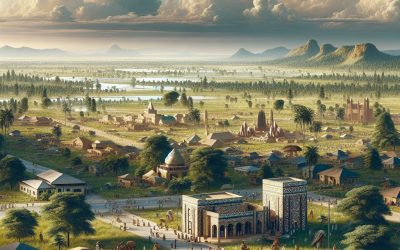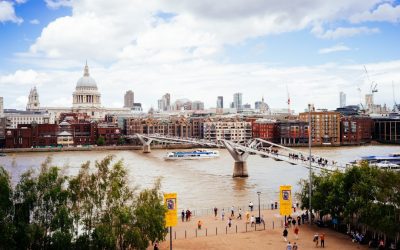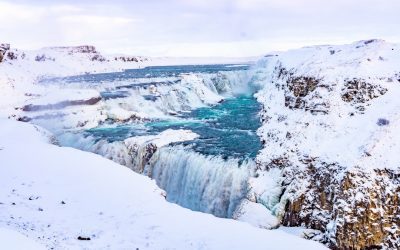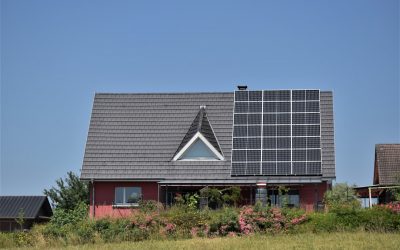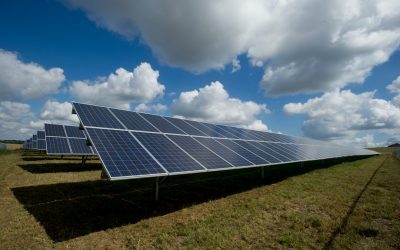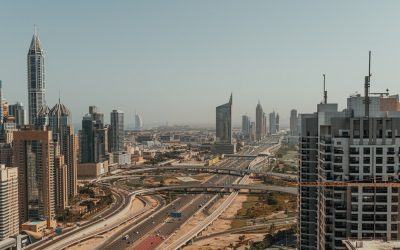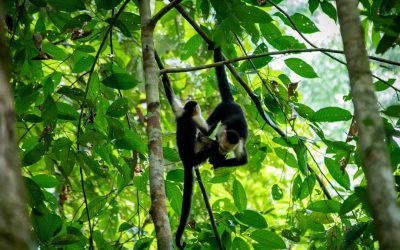World Geography
Geography is the study of the Earth’s landscapes, environments, and the relationships between people and their surroundings. It encompasses both the physical aspects of the Earth, such as its landforms, bodies of water, and climate, as well as the human aspects, including population distribution, cultures, and economies. World geography is a broad field that seeks to understand the complexities of our planet and how humans interact with it. By studying world geography, we can gain a deeper appreciation for the diversity of our planet and the interconnectedness of its various regions.
Geography is a multidisciplinary field that draws on elements of physical science, social science, and humanities. It involves the use of maps, spatial analysis, and geographic information systems (GIS) to understand the Earth’s surface and the processes that shape it. World geography also encompasses the study of human geography, which examines the ways in which people and their activities are distributed across the Earth. By understanding world geography, we can better appreciate the environmental, cultural, and economic challenges facing different regions of the world. This knowledge is crucial for addressing global issues such as climate change, resource management, and international development.
The Five Oceans and Seven Continents
The Earth’s surface is divided into five major oceans: the Pacific, Atlantic, Indian, Southern (or Antarctic), and Arctic Oceans. These vast bodies of water play a crucial role in regulating the Earth’s climate and supporting diverse marine ecosystems. The oceans also serve as important transportation routes and a source of food and other natural resources for human societies around the world.
In addition to the oceans, the Earth’s landmasses are divided into seven continents: Africa, Antarctica, Asia, Europe, North America, Australia (or Oceania), and South America. Each continent has its own unique physical and cultural characteristics, shaped by millions of years of geological processes and human history. From the deserts of Africa to the rainforests of South America, the continents offer a rich tapestry of landscapes and environments for exploration and study.
Major Mountain Ranges and Deserts
The Earth’s surface is also marked by major mountain ranges and deserts that have shaped the planet’s physical and cultural landscapes. The Himalayas, for example, are the highest mountain range in the world and are home to diverse ecosystems and cultures in countries such as India, Nepal, and Bhutan. The Andes in South America, the Rockies in North America, and the Alps in Europe are other prominent mountain ranges that have influenced human settlement patterns and economic activities.
Deserts cover about one-third of the Earth’s land surface and are characterized by low precipitation and extreme temperatures. The Sahara Desert in Africa is the largest hot desert in the world, while the Gobi Desert in Asia is one of the largest cold deserts. Deserts are not only home to unique flora and fauna but have also been important trade routes and cultural crossroads throughout history.
Climate Zones and Biomes
The Earth’s climate is influenced by a variety of factors, including latitude, altitude, ocean currents, and prevailing winds. As a result, the planet is divided into different climate zones, each with its own characteristic weather patterns and ecosystems. The equator, for example, experiences a tropical climate with high temperatures and heavy rainfall, while the polar regions have a cold and dry climate.
These climate zones give rise to different biomes, or large ecological areas characterized by distinct plant and animal communities. The tropical rainforest biome, found near the equator, is home to a diverse array of species and is vital for regulating the Earth’s climate. The grasslands biome, found in regions such as the African savannah and North American prairies, supports grazing animals and has been important for human agriculture throughout history.
Human Geography and Population Distribution
Human geography examines the ways in which people and their activities are distributed across the Earth’s surface. It encompasses topics such as population growth, migration patterns, urbanization, and cultural diversity. Understanding human geography is crucial for addressing global challenges such as poverty, inequality, and environmental degradation.
Population distribution is uneven across the world, with some regions experiencing rapid population growth while others are declining. The majority of the world’s population lives in Asia, particularly in countries such as China and India. Urban areas are also growing rapidly, with more than half of the world’s population now living in cities. This trend has significant implications for infrastructure development, resource management, and social inequality.
Historical and Cultural Geography
Historical geography examines how human activities have shaped the Earth’s landscapes over time. It explores topics such as colonialism, trade routes, and the rise and fall of empires. Cultural geography focuses on how human cultures have developed in different regions of the world and how they interact with their environments.
The Silk Road, for example, was an ancient trade route that connected China with Europe and facilitated the exchange of goods, ideas, and technologies across Eurasia. This historical trade route had a profound impact on the development of cultures and economies along its path. Similarly, cultural geographers study how different societies have adapted to their environments through practices such as agriculture, architecture, and religious beliefs.
The Importance of Geographic Knowledge
Geographic knowledge is crucial for addressing global challenges such as climate change, resource management, and international development. By understanding world geography, we can better appreciate the environmental, cultural, and economic challenges facing different regions of the world. This knowledge is crucial for addressing global issues such as climate change, resource management, and international development.
Geographic knowledge also helps us to understand our interconnectedness with other regions of the world. By studying world geography, we can gain a deeper appreciation for the diversity of our planet and the interconnectedness of its various regions. This understanding can foster a sense of global citizenship and empathy for people from different cultures and backgrounds.
In conclusion, world geography is a complex and multifaceted field that encompasses both physical and human aspects of the Earth’s landscapes. By studying world geography, we can gain a deeper appreciation for the diversity of our planet and the interconnectedness of its various regions. This knowledge is crucial for addressing global challenges such as climate change, resource management, and international development. It also helps us to understand our interconnectedness with other regions of the world and fosters a sense of global citizenship.
FAQs
What is world geography?
World geography is the study of the Earth’s landscapes, environments, and the relationships between people and their environments. It encompasses the physical features of the Earth, as well as the human activity that takes place on it.
Why is world geography important?
World geography is important because it helps us understand the world around us. It provides insights into the physical and human processes that shape our planet, and helps us make informed decisions about how to interact with our environment.
What are the main branches of world geography?
The main branches of world geography include physical geography, which focuses on the Earth’s natural features and processes, and human geography, which examines the relationships between people and their environments.
How does world geography impact our daily lives?
World geography impacts our daily lives in numerous ways, from influencing the weather and climate we experience, to shaping the availability of natural resources and influencing the distribution of populations and cultures around the world.
What are some key concepts in world geography?
Key concepts in world geography include location, place, human-environment interaction, movement, and region. These concepts help geographers understand and interpret the world around them.
Cultural or Historical Sites of Nigeria: Important Cultural Landmarks or Historical Sites In Nigeria
Nigeria boasts a rich cultural and historical heritage, with numerous sites showcasing the nation’s diverse and vibrant past. From ancient cities to sacred groves, Nigeria‘s cultural and historical landmarks offer insight into the country’s history and the traditions that have shaped its present. These sites hold significant historical, cultural and spiritual value for the Nigerian people. They stand as a testament to the nation’s varied heritage and continue to be important attractions for visitors from across the globe. Nigeria’s cultural and historical sites reflect the country’s complex history, with influences from various ethnic groups and colonial powers. These locations provide a unique opportunity to explore Nigeria’s past and gain a deeper understanding of its cultural heritage. Each site, from ancient cities to sacred groves, presents its own narrative and offers distinct insights into Nigeria’s history and traditions. Notable examples include the ancient city of Benin and the Osun-Osogbo Sacred Grove, which exemplify Nigeria’s rich cultural heritage and are essential visits for those interested in history and culture. Summary Nigeria is home to a rich tapestry of cultural and historical sites that showcase the country’s diverse heritage and traditions. The Ancient City of Benin is famous for its impressive bronze sculptures and ancient walls, offering a glimpse into the kingdom’s historical significance. The Osun-Osogbo Sacred Grove is a UNESCO World Heritage site, known for its sacred forests, shrines, and sculptures dedicated to the Yoruba goddess of fertility. The Sukur Cultural Landscape is a testament to the architectural and cultural achievements of the Sukur people, featuring terraced fields and a palace complex. The Kano City Walls are an important symbol of...
Nigeria
Nigeria (Federal Republic of Nigeria) Capital: Abuja Population (Estimated July 2012): 170,123,740 Area: 923,768km2 or 356,669mi2 Currency: Nigerian naira (₦) Official Language: English Political Information: Federal Republic Official Religion: No Official Religion (approximately 50% of the population are Muslim, 40% are Christian and 10% have Indigenous beliefs) Highest Mountain: Maisajeh Hill (mountain) at 1,593m or 5,226ft GDP Official Exchange Rate (OER is more precise at gauging a country’s economic power) (Estimated 2011): $247.1 billion (US$) or (GBP) GDP (OER) Per Capita (per member of the population estimated 2011): (US$) or (GBP) GDP Purchasing Power Parity (PPP is good for gauging living conditions and the use of resources but is not as accurate as OER. This data has been calculated based on the sum value of all goods and services produced in the country valued at prices prevailing in the United States) (Estimated 2011): $414.5 billion (US$) or (GBP) GDP (PPP) Per Capita (per member of the population estimated 2011): $2,600 (US$) or (GBP) Time Zone (GMT/UTC): +1:00 Wildlife: Counties/Provinces/States: 36 states and 1 territory*; Abia, Adamawa, Akwa Ibom, Anambra, Bauchi, Bayelsa, Benue, Borno, Cross River, Delta, Ebonyi, Edo, Ekiti, Enugu, Federal Capital Territory*, Gombe, Imo, Jigawa, Kaduna, Kano, Katsina, Kebbi, Kogi, Kwara, Lagos, Nassarawa, Niger, Ogun, Ondo, Osun, Oyo, Plateau, Rivers, Sokoto, Taraba, Yobe, Zamfara Leaders: President Goodluck Jonathan and Vice President Mohammed Namadi SAMBO Additional: Gained independence from the U.K. on the 1st of October 1960. Sources: CIA World Fact Book, Encyclopaedia Britannica. Nigeria Nigeria, officially the Federal Republic of Nigeria, is a country situated in West Africa. It is the most populous nation in Africa and the seventh most populous globally, with...
Future of Coastal Cities: Threats from Rising Sea Levels in Oceanic Climate Zones
Rising sea levels in oceanic climate zones are a significant and pressing issue exacerbated by climate change. Oceanic climate zones, characterised by their proximity to the ocean, are particularly vulnerable to the impacts of rising sea levels. As global temperatures continue to rise, polar ice caps and glaciers are melting at an accelerated rate, causing sea levels to rise. This phenomenon poses a serious threat to coastal cities and communities, as well as to critical infrastructure such as ports, roads, and buildings. The implications of rising sea levels in oceanic climate zones are far-reaching and require urgent attention and action. The impact of rising sea levels in oceanic climate zones is not limited to coastal areas alone. It also has the potential to disrupt marine ecosystems, leading to loss of biodiversity and threatening the livelihoods of communities that depend on marine resources. Additionally, the increased frequency and intensity of storm surges and coastal flooding can result in widespread damage to property and infrastructure, as well as loss of life. The implications of rising sea levels in oceanic climate zones are not only environmental but also economic and social, making it a complex and multi-faceted issue that requires a comprehensive approach to address. Summary Rising sea levels in oceanic climate zones are a growing concern due to climate change and melting polar ice caps. Coastal cities and infrastructure are at risk of flooding and erosion, leading to potential economic and social impacts. Potential solutions and adaptation strategies include coastal defences, land use planning, and sustainable urban design. Economic and social implications of rising sea levels include displacement of communities, loss...
Highlighting the challenges of water scarcity in desert and semi-arid zones and explore innovative solutions for sustainable living.
Water scarcity is a critical issue in desert and semi-arid zones, where water availability is constrained due to low rainfall and high evaporation rates. These regions support diverse ecosystems and communities, all of which depend on water for survival. The limited water supply in these areas has widespread consequences, impacting not only local populations but also the delicate equilibrium of ecosystems. As water demand increases due to population growth and climate change, it is imperative to address water scarcity in these regions through sustainable management practices and innovative solutions. The effects of water scarcity in desert and semi-arid zones are multifaceted, influencing both human settlements and the natural environment. Communities in these regions often struggle to access clean and safe drinking water, resulting in health problems and diminished quality of life. Agriculture, a crucial source of livelihood for many in these areas, also suffers due to water scarcity, leading to food insecurity and economic difficulties. Ecosystems in desert and semi-arid zones are likewise under threat, as water scarcity can result in habitat degradation and loss of biodiversity. It is evident that addressing water scarcity in these regions is essential for the welfare of both people and the environment. Summary Water scarcity is a pressing issue in desert and semi-arid zones, impacting both communities and ecosystems. Traditional water management practices have been crucial in these regions, but innovative solutions are needed for sustainable water management. Technology plays a significant role in mitigating water scarcity, offering potential solutions for sustainable water management. Community engagement and education are essential for promoting sustainable living and addressing water scarcity in these regions. Addressing water...
Water Scarcity in Arid Climate Zones: Innovative Solutions
Water scarcity in arid climate zones has a significant impact on the environment, economy and well-being of communities. These regions, characterised by limited rainfall and high evaporation rates, face considerable challenges in meeting the water needs of their populations. The shortage of water resources affects agriculture, industry and domestic use, resulting in reduced crop yields, constrained economic growth and increased competition for water. Moreover, the lack of access to clean and safe drinking water can have serious health implications, leading to waterborne diseases and malnutrition. The depletion of groundwater reserves and degradation of ecosystems further exacerbate the impact of water scarcity, posing a threat to biodiversity and the sustainability of natural resources. The consequences of water scarcity in arid climate zones are extensive and require urgent attention to mitigate its effects. The lack of water impedes agricultural productivity, leading to food insecurity and poverty among rural communities. Industries reliant on water for production face operational challenges, affecting employment and economic growth. Furthermore, the scarcity of water resources can lead to conflicts over access to water, exacerbating social tensions and political instability. Addressing water scarcity in arid climate zones is crucial for sustainable development and the well-being of communities, necessitating innovative solutions and collaborative efforts to ensure access to clean and safe water for all. Summary Water scarcity in arid climate zones has a significant impact on communities, agriculture, and the environment, leading to increased competition for limited water resources. Innovative water conservation techniques such as drip irrigation, greywater recycling, and xeriscaping are crucial for managing water scarcity in arid climate zones. Desalination technology offers a promising solution for water...
Glacial Retreat and Its Impact on Highland and Polar Zones
Glacial retreat refers to the process of glaciers shrinking and receding due to the effects of climate change. This phenomenon is a direct result of global warming, which has caused a rise in temperatures and subsequently led to the melting of ice in polar and highland regions. Glacial retreat is a significant indicator of climate change and has far-reaching implications for ecosystems, water resources, biodiversity, and human societies. As glaciers continue to melt at an alarming rate, it is crucial to understand the impact of this phenomenon on the environment and to develop strategies to mitigate its effects. Glacial retreat is a natural process that has occurred throughout Earth’s history, but the current rate of retreat is unprecedented. The Intergovernmental Panel on Climate Change (IPCC) has reported that glaciers are losing mass at an accelerating rate, with significant implications for sea level rise and water availability. The primary cause of glacial retreat is the increase in greenhouse gas emissions, which trap heat in the Earth’s atmosphere and lead to a rise in global temperatures. As a result, glaciers are melting at an alarming rate, leading to the loss of freshwater resources, changes in ecosystems, and increased risks of natural disasters such as glacial lake outburst floods. It is essential to understand the impact of glacial retreat on various ecosystems and to develop strategies to mitigate its effects. Summary Glacial retreat is the process of glaciers shrinking and melting due to rising temperatures, leading to significant environmental impacts. Highland ecosystems are experiencing changes in vegetation, water availability, and wildlife habitats due to glacial retreat, affecting biodiversity and ecosystem stability. Polar...
Exploring how different climate zones affect the potential for renewable energy sources like solar, wind, and hydropower.
Climate zones play a crucial role in determining the potential for renewable energy sources. These zones are defined by a combination of factors such as temperature, precipitation and wind patterns. Understanding the unique characteristics of each climate zone is essential for harnessing the full potential of renewable energy sources. Renewable energy, such as solar, wind and hydropower, offers a sustainable alternative to traditional fossil fuels and has the potential to mitigate the impacts of climate change. By tapping into the natural resources available in different climate zones, we can reduce our reliance on non-renewable energy sources and move towards a more sustainable future. Renewable energy sources are abundant in various climate zones around the world, offering a diverse range of opportunities for harnessing clean energy. Solar energy is particularly abundant in arid and tropical climate zones, whilst wind energy is more prevalent in coastal and high-altitude regions. Hydropower, on the other hand, is abundant in areas with high levels of precipitation and river systems. By understanding the unique characteristics of each climate zone, we can identify the most suitable renewable energy sources and technologies for each region, ultimately maximising their potential and contributing to a more sustainable energy future. Summary Climate zones play a crucial role in determining the potential for renewable energy sources such as solar, wind, and hydropower. Solar energy potential is highest in tropical and desert climate zones, making them ideal for large-scale solar power projects. Wind energy potential is greatest in coastal and open plain climate zones, offering significant opportunities for harnessing wind power. Hydropower potential is abundant in mountainous and riverine climate zones, providing...
Climate Zones and Global Energy Needs: Solar, Wind, and Hydropower Potential
Climate zones are geographical areas that share similar weather patterns and climatic conditions. These zones are determined by factors such as temperature, precipitation and humidity. There are several different climate classification systems, but the most widely used is the Köppen climate classification, which divides the world into five primary climate groups: tropical, dry, temperate, continental and polar. Tropical climate zones are typically found near the equator and are characterised by high temperatures and heavy rainfall throughout the year. Dry climate zones, conversely, experience very little precipitation and are often found in desert regions. Temperate climate zones have moderate temperatures and distinct seasons, whilst continental climate zones have hot summers and cold winters. Finally, polar climate zones are characterised by extremely cold temperatures and little to no vegetation. Understanding climate zones is crucial for assessing the potential for renewable energy sources such as solar, wind and hydropower. Different climate zones offer unique opportunities and challenges for harnessing these renewable energy sources, making it essential to consider the specific characteristics of each zone when developing energy strategies. Summary Climate zones are determined by factors such as temperature, precipitation, and vegetation, and can be classified into categories such as tropical, temperate, and polar. Solar power potential is highest in tropical and desert climate zones due to the abundance of sunlight, making these areas ideal for solar energy production. Wind power potential is greatest in coastal and open plain climate zones, where strong and consistent winds can be harnessed for energy generation. Hydropower potential is highest in mountainous and riverine climate zones, where the presence of water bodies and elevation differences allow for...
Discussing the challenges of balancing environmental protection with urban sprawl in temperate climate regions.
Urban sprawl is a phenomenon that has been increasing in temperate climate regions, as cities continue to expand and develop. This rapid growth of urban areas has significant implications for the environment, often resulting in the destruction of natural habitats and the loss of biodiversity. In temperate climate regions, where the climate is generally mild and the landscape is typically characterised by forests, grasslands, and wetlands, urban sprawl can have particularly detrimental effects on the environment. As cities grow, they encroach upon these natural areas, leading to habitat fragmentation and loss. This can have serious consequences for the flora and fauna that depend on these habitats for their survival, resulting in a decline in biodiversity. Furthermore, urban sprawl can also lead to increased water and air pollution, as well as the loss of green spaces and agricultural land. Consequently, it is essential to consider the environmental impact of urban sprawl in temperate climate regions and to develop strategies for sustainable urban development that can help to mitigate these effects. Urban sprawl is a complex issue that requires careful consideration of its environmental impact in temperate climate regions. As cities continue to expand, they often encroach upon natural habitats, leading to habitat fragmentation and loss. This can have serious consequences for the plants and animals that rely on these habitats for their survival, resulting in a decline in biodiversity. Additionally, urban sprawl can also lead to increased water and air pollution, as well as the loss of green spaces and agricultural land. Therefore, it is crucial to consider the environmental impact of urban sprawl in temperate climate regions and to...
Temperate Zones: Balancing Nature and Urbanization
Temperate zones are regions of the Earth situated between the tropics and the polar circles. These areas are characterised by moderate temperatures, distinct seasons and a diverse range of flora and fauna. The temperate zones harbour a variety of ecosystems, including forests, grasslands and wetlands, which support a rich array of plant and animal species. These regions are also significant for agriculture, providing fertile soil and a suitable climate for cultivating crops. The temperate zones are densely populated, with numerous major cities and urban areas located within them. Consequently, these regions face considerable challenges related to urbanisation, environmental degradation and the conservation of natural resources. It is essential to strike a balance between human development and the preservation of the unique ecosystems and biodiversity found in temperate zones. Summary Temperate zones are regions with moderate climate and distinct seasons, and are home to diverse ecosystems and species. Urbanization in temperate zones has led to habitat loss, pollution, and fragmentation of natural areas, impacting biodiversity and ecosystem functioning. Conservation efforts in temperate zones include protected areas, restoration projects, and sustainable land management practices to preserve and restore natural habitats. Biodiversity in temperate zones is rich and includes a wide variety of plant and animal species, many of which are endemic and at risk of extinction. Sustainable development in temperate zones involves balancing economic growth with environmental protection, promoting green infrastructure and sustainable resource management. The Impact of Urbanization on Temperate Zones The Destruction of Natural Habitats The expansion of urban areas results in the destruction of forests, wetlands, and other vital habitats. This can have a catastrophic impact on the...
Focusing on the importance of eco-tourism in tropical rainforests, tundras, and deserts, and the need for conservation.
Eco-tourism is a form of sustainable travel that focuses on experiencing natural areas whilst conserving the environment and improving the well-being of local communities. It is a responsible way of travelling to natural areas that conserves the environment and sustains the well-being of local people. Eco-tourism aims to educate travellers about the importance of preserving natural habitats and wildlife, whilst also providing economic benefits to local communities. This type of tourism promotes conservation, fosters respect for different cultures, and minimises the negative impact on the environment. Eco-tourism destinations often include national parks, wildlife reserves, and other protected areas where visitors can experience nature in its purest form. Eco-tourism has gained popularity in recent years as more people become aware of the environmental and social impact of traditional tourism. Travellers are seeking authentic and meaningful experiences that allow them to connect with nature and contribute to the preservation of natural habitats. Eco-tourism offers a way for people to explore the world whilst making a positive impact on the planet. By supporting eco-friendly accommodations, local guides, and sustainable tour operators, travellers can help protect fragile ecosystems and support the livelihoods of indigenous communities. Overall, eco-tourism provides a way for people to travel responsibly and contribute to the conservation of natural resources. Summary Eco-tourism promotes responsible travel and conservation in natural environments Eco-tourism in tropical rainforests helps protect biodiversity and supports local communities Tundras benefit from eco-tourism by raising awareness about climate change and wildlife conservation Eco-tourism in deserts offers opportunities for sustainable development and cultural exchange Conservation efforts in tropical rainforests focus on preserving endangered species and combating deforestation The Importance...
Eco-Tourism and Conservation in Fragile Climate Zones
Eco-tourism is a form of tourism that emphasises responsible travel to natural areas, with the aim of conserving the environment and enhancing the well-being of local communities. It is a rapidly expanding sector of the tourism industry, with an increasing number of travellers seeking authentic and sustainable experiences in fragile climate zones. These areas, such as rainforests, coral reefs, and polar regions, are particularly susceptible to the effects of climate change and human activity. Consequently, eco-tourism plays a vital role in promoting conservation and sustainable development in these regions. In fragile climate zones, eco-tourism can provide an alternative source of income for local communities, reducing their dependence on activities that damage the environment, such as logging or fishing. By creating economic incentives for conservation, eco-tourism can help safeguard biodiversity and natural habitats. However, it is crucial that eco-tourism is managed carefully to ensure that it does not contribute to further environmental degradation. This necessitates a balance between promoting tourism and protecting the delicate ecosystems that attract visitors to these areas in the first place. Summary Eco-tourism and conservation play a crucial role in protecting fragile climate zones and promoting sustainable development. Sustainable tourism in fragile climate zones is important for preserving biodiversity, protecting natural resources, and supporting local communities. Conservation in fragile climate zones faces challenges such as climate change, habitat destruction, and over-tourism, which threaten the delicate ecosystems. Successful examples of eco-tourism and conservation in fragile climate zones include community-based tourism initiatives, wildlife reserves, and sustainable travel practices. Strategies for responsible eco-tourism in fragile climate zones include promoting low-impact tourism, supporting local businesses, and educating visitors about environmental...

